| |
|
St
Margaret, Clenchwarton
 |
|
The villages west of
King's Lynn almost run into each other. West Lynn
straggles out, there are a few fields, and then
the houses get pleasanter and eventually become
Clenchwarton. The road is busy, but off to the
south set in bungalow suburbia is St Margaret.
Compared with some of the exotica around here, St
Margaret is refreshingly conventional - pretty
much all of a late 14th/early 15th century piece,
and no transepts, separate tower or modern
chancel in sight. A mixture of carstone and
flint, the church is very attractive, and
slightly ramshackle, as if it was made out of
chocolate chip cookies.
There's no keyholder notice, and in three visits
I had never found it open, so I tracked down the
address of the rector and prepared to do battle. |
Well, he couldn't have been nicer.
He was a very friendly chap with a large white beard in
the Russian Orthodox manner. He gave me the key, we
chatted for a while about visiting churches, and then he
showed me the shortcut to the church through his garden.
The key was to the vestry, and although I usually prefer
not to enter a church at the east (it confuses me and I
forget to photograph things) I found it to be a small,
lovely church inside. My favourite thing of all is the
1928 window at the west end of the north side of the nave
by Hardman & Co. It depicts two angels as Faith and
Hope, and Christ as Charity. Curly-haired, serious-faced
children play at their feet, pretty without being
mawkish, and scenes illustrate the virtue below each
figure. The window remembers Ellen Mary Stevenson and her
work for the Girls' Friendly Society, which was a late
19th Century Anglican society for girls in service away
from home. The Society still exists with a different
function today.
Pevsner, or his revising editor,
confuses the glass in the chancel, but the east window is
probably by Charles Gibbs. The side window depicting
Amazonian images of Saints Margaret and Catherine is
rather good, but it isn't obvious which workshop produced
it. Could it be by Clayton & Bell?
  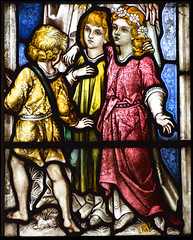 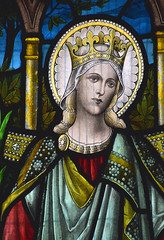 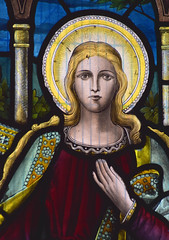
The overall feel of the church is
of a peaceful spirituality in the Anglo-catholic
tradition - not as spiky as neighbouring West Lynn, but
very much to my taste. However, I am bound to say that,
as with anywhere that a locked church is so close to the
homes it is meant to serve, you get a sense that here is
the Church of England in its last days, no longer serving
all but a home for a small group of determined
worshippers growing older and fewer by the year,
defending themselves against the world with rituals that
become increasingly meaningless as the distance between
the church and its outsiders grows. One day there'll be
hardly any of them left, and the last few will turn out
the lights and lock the door behind them for the last
time. Thank God that parishes like this are now few and
far between.
| I took a last look around,
knowing that I'd probably never come back. The
altar and lectern were dressed properly for Lent,
the only church all day where I saw this. A
pretty modern madonna and child sits on an image
niche in the north wall of the nave. High above
the tower arch hangs a timber from a former roof
painted with the name J Wardale, who was a
churchwarden in 1742. This is such a well-kept
church, such a sense of being loved, it seems
such a shame that it is not a numinous gift to
those who live around it. Before the church gets sold off for
use as a playschool or a mosque or something, do
take the opportunity to see the memorial to
Francis Forster, who died in 1741. When the
terrible inundation Feb 16 1735 threatened the
destruction of this whole Level, it reports,
He with unshaken resolution, when all around
him droop'd under their misery, opposed the
Flood, repaired the broken ramparts, and sav'd
the land from that fatal ruin with which the next
assault must have overwhelm'd it.
|
|
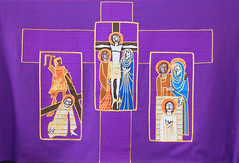 |
Simon Knott, April 2017
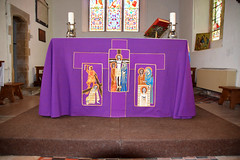 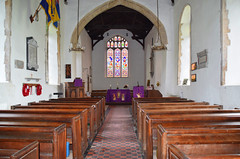
   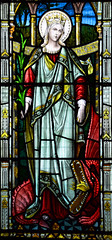 
    


|
|
|
